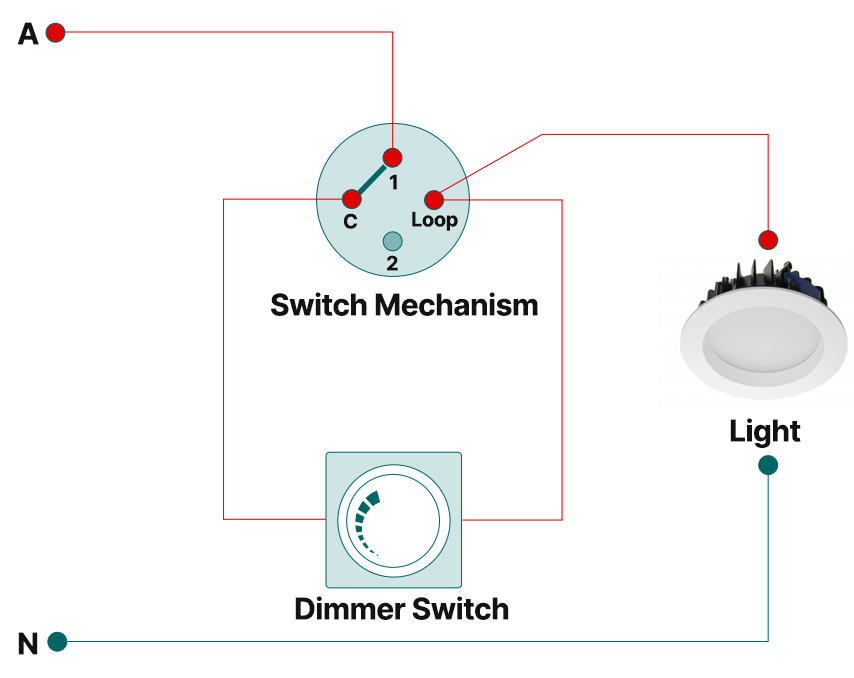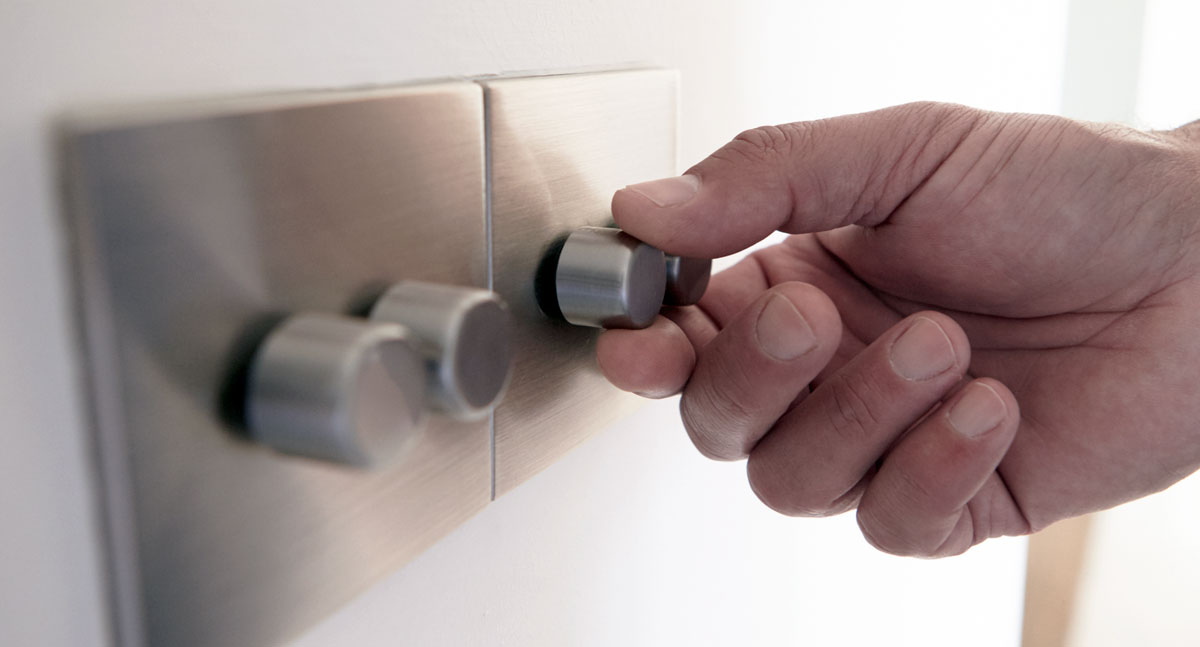Are you an electrician who needs some guidance on wiring a dimmer switch in Australia? If so, you’ve come to the right place. Installing lights and wiring a dimmer switch is actually quite straight forward, and can be done in just a few minutes with some basic tools. We should mention that you must be a licensed electrician to wire a dimmer switch in Australia, this guide is not suitable for those without the proper license. So if you’re looking to use dimmable LEDs to save energy, read on for a breakdown of the steps involved.
How to wire a dimmer switch in Australia
Most dimmer switches designed for use within Australia will operate off a 240V AC Voltage. Many will come with short circuit protection as well as Thermal Overload protection.
Tools required
- Pliers
- Multimeter
- Insulated Flat-head Screwdriver
- Insulated Phillips Head Screwdriver
Switch Mechanism Definitions
- C = Common terminal
- L = Loop terminal
- 1 = Switching between common and 1 with light switch in on position
- 2 – Switching between common and 2 with light switch in off position
Steps
- Disconnect the mains power to the relevant circuit at the main switchboard. Your light will usually be on a 10 amp circuit breaker.
- If you have an existing switch installed, remove it from the wall.
- Connect the dimmer switch as per the structure seen in the wiring diagram below these instructions
- Attach the switch plate to the wall, these will usually include some sort of mounting bracket that attaches to the gyprock
- Reconnect the power at the main switchboard
- Turn the dimmer switch on and ensure the dimming functionality works as designed by rotating the dial from left to right.
If you prefer something more visual, you can watch this video on Youtube.
Important Notes
- Never connect the dimmer switch to the Neutral lead only, which can lead to serious harm or death.
- Always ensure your mains power is turned off before fitting any dimmer switch.
Dimmer Switch Wiring Diagram

Wiring a light switch
There will typically be four different terminals on the light switch, commonly marked as ‘C’, ‘1’, ‘2’ & ‘Loop’. Generally, the terminal marked ‘2’ has a T-shaped small piece of plastic obscuring it because it is rarely needed and more times than not is used for 2-way switches. If you do need to use it for some reason, you can reasonably easily break the protective plastic sleeve with a screwdriver.
The standard switch is a single-pole, double-throw rocker switch. With one common terminal and two switch terminals, it can be used to control two separate devices or circuits. The loop is just a ‘spare’, unconnected terminal thrown in for convenience. It has no electrical connection to the switch and can be used, for example, for joining the neutral conductors of the cables from the supply and to the light. Three-way switches are also common but can make it harder to tell if a light switch is on or off just by looking at the switch itself.
Steps to wire a light switch include:
- Connect the active supply to the ‘C’ – Common terminal.
- Gather the switched active supply to the actual light from ‘1’.
- Connect the supply and load side neutral conductors. This is done by using the ‘loop’ terminal and then separately joining the supply and load cables earth conductors together (possibly using a double-screwed BP connector). It is mandatory to have an earth conductor for the light fitting.
Some may find the above steps unnecessary complex because you may not need the neutral wire to be brought back into the switch. The above steps are common with US three-way switches which are used to control the lights from two locations with two three-way switches. If you are looking to control when your lights are dimmed, you may want to look at a Dimmer Timer Combination switch that will allow you to schedule when your lights are either turned on or off, or dimmed, depending upon your needs.


